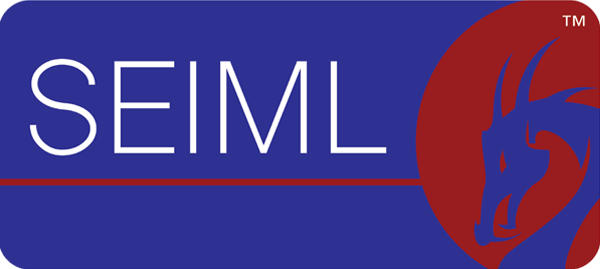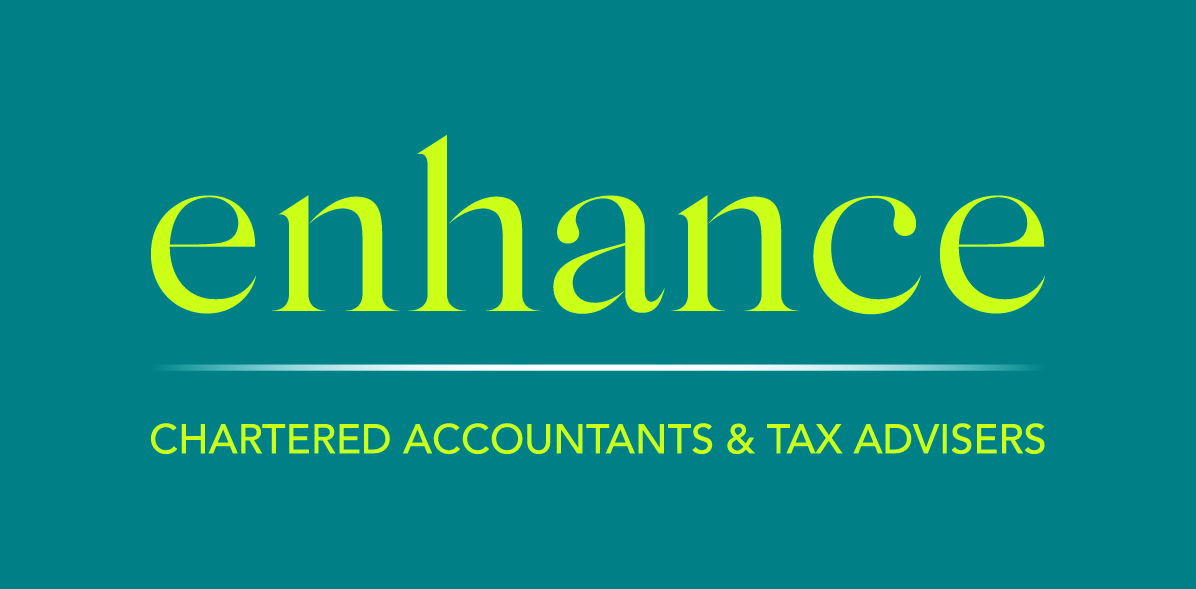Staple AI – business update, January 2023
Staple’s AI instantly extracts data from semi-structured and unstructured documents into structured data, regardless of layout or language. Staple has developed a machine learning (ML) tool that reads, interprets data from documents faster, more accurately and more affordably than any human can, at scale. Staple’s data extraction capabilities operate successfully regardless of layout or language.
Ben Stein, CEO, is a Chartered Accountant and qualified lawyer with more than 14 years of financial and commercial experience in the technology, financial services, real estate, engineering and infrastructure sectors. Ben has advised on multiple large scale capital investments, technology projects and business initiatives in North America, Europe and Asia.
Script of Interview
Interviewee Ben Stein (BS)
Position Chief Executive Officer (CEO)
Company name Staple AI Pte Ltd (‘Staple’)
Company website https://staple.io/
Interviewer John D. Evans, CFA (JE)
Interview conducted on 17 January 2023
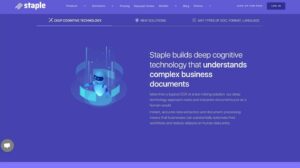
JE Okay, good day, and welcome to the viewers of SEIML Ventures. Today, we’re speaking with Mr. Ben Stein, who is the Founder and CEO of Staple, Proprietary. Staple’s artificial intelligence instantly extracts, semi structured and unstructured documents into structured data, regardless of layout, or language. And Staple has developed a machine learning tool that reads this unstructured data and puts it more accurately and more affordably than any human can at scale. And its data extraction capabilities operate successfully, regardless of layout, or language. So Ben is, as I said, the founder and CEO of Staple. We talked almost two years ago so, there’s been a little bit of a gap. So, we’re getting together today to get an update of everything that’s happened, and what the plans are for the coming year. So welcome back Ben.
BS Thanks, John, good to speak to you again. And it has been a while.
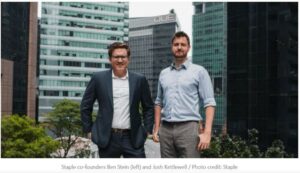
The past in review
JE So, our last conversation was in March 2021, almost two years, I presume a lot has happened since then. So just start off by bringing us up to date with major developments and achievements at Staple since our last discussion.
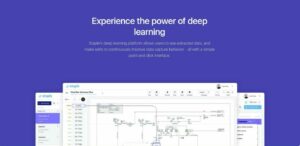
BS Yeah, sure. Well, there have been a few things that have happened. Obviously, we’ve grown a little bit in this period, perhaps not so obviously. But we have been fortunate enough to grow through a very difficult economic climate and with the pandemic and the flow and effects of that. From a product perspective, we have expanded a little bit on the offering that you described. So, fundamental to our offering is the extraction piece. So, we still focus on reading, extracting and interpreting data from a variety of non-structured documents. And when I say documents, I mean that in the broadest possible sense, so that includes things like photographs, scans, PDFs, but also things like Word documents, Excel documents, and other formats too. So initially, we were focusing first on non-structured documents and extracting the data from those documents. But we have moved a little bit more into structured documents too, so that we can be a single gateway for capturing all sorts of data, regardless of its source. So, beyond that, we also have developed a feature that permits intelligent reconciliation. So rather than just uploading a single document at a time, users can now upload up to 10 documents at once. And our AI looks for anomalies or inconsistencies between those datasets, so that they can be ingested into an enterprise system. So, this pattern of reading, extracting reconciling and entering data into our system is quite common in a number of different industries, not least of all financial services. So, when you’re doing KYC checks, when you’re doing maybe trade settlement reconciliations, when you’re doing bank statement checks, etc. This reconciliation feature is quite fundamental to that process. But it’s also common to things like counting, logistics, procurement, across a number of industries. This, this process is quite manual and we’ve decided to take it a step further and offer this reconciliation feature as well to our customers. In addition to the product developments, we’ve also been fortunate enough to raise some additional funding. This was led by a corporate VC out of Germany. So that that was a big milestone for us last year. And from that, we’ve been able to grow the team further and expand our offering into new markets.
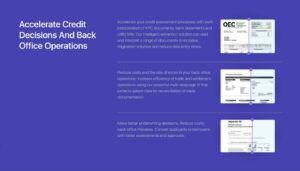
JE Okay. So, interesting. So that brings us up to date on the product side, where there’s been expansion. So now let’s talk a bit about the target customer: size of the customer, geographical location and industry. And has there been any change in in your target customer focus over the last two years?
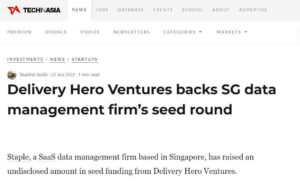
BS Yeah, absolutely. I might I might answer the second part of that question first. There has been a change. Initially, I think we were a little bit broad in our focus. And essentially, we understand that this problem of, of non-structured data affects pretty much every company in the world, but it’s really difficult to have such a scattergun approach when going after customers. So, we’ve really refocused our approach and we really focus on two main areas. The first being banking, financial services and insurance. So, these are industries that rely on documentation in a number of different departments in a number of different areas. The second area is more complex supply chain companies. So that could be industrials with a number of components in the assembly or manufacturing process. Or it could be FMCG companies. So, these are the two areas where we are we are focusing on where we have 99% of our customer base today. In terms of the size of those companies, we very much focus on the Enterprise end of the market. So, anything more than 1,000 employees. That’s our ideal customer focus, because we tend to find that they have very challenging needs, challenging requirements with respect to the documentation under their processing. And finally, the location of these customers, again, I think when we spoke to you last, primarily an Asian focus. That’s still the case, but we are expanding more into Europe, North America and South America now. We have users now in around 35 different countries. So, we almost touch every continent now.

JE The first part of your answer reminded me something in business school about the ready – fire – aim strategy where you go out and you just sort of try to cover everyone and you see where the demand comes. And you focus your idea based on the feedback you get in your initial six or 12 months. So, you you’ve just validated an MBA case study I took about 30 years ago. It’s good to hear. But now, you’ve already touched upon the geographic focus how you started off in Southeast Asia. But now you’ve expanded dramatically. So, I’m going to sort of extend the question and how have you done that? Has that been through relationships and just being referred to different divisions of big companies? Or are you actively marketing in Europe, North America and South America now?

BS No. Yeah. So, it’s a good question. We aren’t actively marketing in those locations, it has almost entirely been driven by expansion of existing relationships or existing accounts. Sort of an unintentional consequence of focusing on enterprise customers. Because we’re focusing on these very large customers, inevitably, they have operations in different jurisdictions. And although the relationship is initially established in Singapore, or another part of Asia, they often have a similar problem in a different location in another country or continent. This is something we initially were reluctant to do, because it takes more resources and we want to focus our effort. But it isn’t that difficult to expand an existing offering within the same organization across borders. We just have to have the ability to support these customers in other time zones, and that’s something we’re able to do remotely.
JE Okay. So, what has been the implications on your staffing, you’ve got to support these companies working on a full, maybe 24-hour time zones. Have you had to have a major increase in staffing in any area over this time?
BS Yeah, in most areas, we’ve grown our head counts, but certainly the customer success, customer support team was, in terms of dedicated customer success was nonexistent two years ago. But now we have four people working in that team. In total, we have 25 FTEs. We have added additional team members to our technology team and core machine learning and AI team, as well as our more general developer team as well. And then also on the sales side, we’ve added two more head account as well. So, we haven’t grown across board, but customer success and customer support has been very important to make sure we maintain our existing customer, relationships.
JE Is everyone located in Singapore or are a lot doing remote work from all different locations?
BS Yeah, a number of locations. So different parts of Asia. So, our HQ still is Singapore. So, we have several people here. But we also have developers in Vietnam, India, we have other team members in Indonesia, and Philippines as well, our business development and Customer Success side.
JE So, you’re already a multinational organization.
BS You could say that, yes.
JE Congratulations. So, I mean, you talked a little bit about the market, some of the difficulties. So just tell us for 2022, which I mean for me sitting here in China was a very difficult year for COVID. Now we’ve got interest rates rising and venture capital funding is more difficult. How has the current impacts of COVID and interest rates impacted your business? Or have you been somewhat not affected by those greatly?
BS I would say it hasn’t had a significant impact on our business in terms of customer interest, generating revenue. I think like most businesses, we’ve had to change the way we do business it’s a little bit more difficult to meet face to face, obviously. But we’ve been quite fortunate in that we are a little bit counter cyclical in terms of the product we offer. Every business still wants to maximize efficiency, maximize productivity. These are things we help our customers to achieve. So it is, in a lot of respects it’s still business as usual. But there are some areas where we’ve had to adjust operation.
JE Okay. I just want to add a point because it’s an interesting question that comes out of what you’ve just said, particularly your broad area. And you just said, now it’s more difficult to meet people face to face. Do you think there has been a fundamental change in business in that you can, relatively speaking, do much more business digitally, without meeting people face to face? Or is it going to go back to a face-to-face business when COVID is gone?
BS I think people still prefer to meet in person, I think human connection still matters quite a bit. And what we found is that, if given the choice, a customer would prefer to come to our office or we can meet in their office or meet for a coffee, there is there is still a lot of importance placed on that human connection. This is more from a, I guess, a sales or business development perspective. However, yeah, it is certainly possible to achieve quite a lot more remotely, we found for the non-nonessential, I guess, the internal meetings, or the operational meetings where we can fit a lot more into our schedule without having to deal with commutes or travelling time. It’s sort of a double-edged sword, because I think, during COVID, people learned to really stack their calendar with back-to-back meetings. It’s possible to disappear at one meeting and reappear in another meeting in a matter of minutes where previously that just wasn’t possible, we had to factor in travel time. So, with respect to those sorts of I’ll say, operational meetings, we can still have a lot more productivity via remote platform. But I still think it’s important that we have the face to face. Increasingly, we’re finding that we’re going back to face to face more for the sort of relationship building meetings.

JE Okay, interesting. The next year will be interesting to see if COVID is truly disappearing, will we rebound to our previous habits of travel and meeting? Or will there have been a permanent move to more digital online meeting? I’m interested to see that myself. So, with that as sort of an entry. Let’s look forward to 2023 and Staple, and what are your key goals and objectives for the upcoming New Year?
Looking forward to 2023

BS Yeah, so we are obviously focusing on becoming leaders in those sectors I mentioned earlier in this discussion. So banking, financial services, insurance and F&B, FMCG industrial sectors, where there is a complex supply chain requirement across cross borders to manage documentation. These are these areas were really doubling down on. Particularly, the fact that we offer our multilanguage support, it’s quite appealing to multinational organizations. And so, we’re pushing hard into these sectors. We are working in a number of locations now to acquire customers in these sectors. We are looking to raise an additional funding round later this year, targeting Q3 2023. We haven’t really got a number in mind just yet, but we are working towards that milestone. And also, we are edging towards profitability this year. That’s something that we were hoping to reach regardless of that funding round. So yeah, we’re in a financially strong position. We are looking to grow headcount even further. But these are, broadly the main objectives for this year.

JE You’re very fortunate to be able to say that the current circumstances have not materially impacted you. Because a lot of companies, and even more so in China in 2022, SMEs have been really hurt badly by the by the situation COVID and the circumstances of the government policies. So, if you’ve been relatively unimpacted by these circumstances and still have a positive outlook for 2023, you’re doing better than about 98% of the SMEs out there.
BS We do count ourselves fortunate for sure. This has been fortunate. Right place, right time, right market, I guess. Yeah, I do appreciate it. It’s quite challenging for a lot of organizations out there, given the current climate.
JE Okay, that’s very interesting. I mean, it’s fascinating what you do, because data drives everything. And yet, we still, you know, like all the different electric plugs we have or things like that we still don’t have standardization. So somehow bringing all of those to some uniform basis has got to be one of the most important operational business tasks in this day of big data. So, yes, I certainly agree with your last statement. You’re doing the right thing at the right time and wish you the best for the future.
BS Thank you very much.
End.
